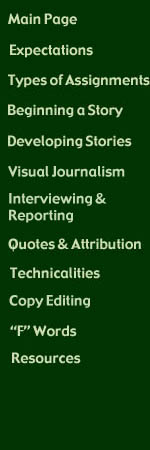

Technicalities
This section will focus on tricky technicalities that beginning writers often slip on.
Who or Whom
Usually who versus whom is considered a complicated problem. Which do you use and when? Check out this effective video:
To quickly check your usage, simply substitute the personal pronoun “he/him” or “she/her” for “who/whom.” If he or she would be the correct form, the proper choice is "who.” If “him” or “her” would be correct, use “whom.”
That or Which
Remember when explaining essential clauses (something that's essential to the meaning of the sentence), use "that." In a nonessential clause, use "which". If the meaning of the sentence will not be altered without an inclusion of either word, chances are the word you're looking for is "which" and not "that."
Example:
Do you remember the day that we met?
versus
Do you remember the day we met?
The first implies the very first day and in the second, the definition of the day is not clear—the first day or some other day?
Abbreviations
Many beginning writers forget to or don't remember abbreviations of names of states, addresses and salutations. See the Writer's Web page on abbreviations for some common examples. The AP Stylebook blog also offers many of their entries online on abbreviations for free, check it out: AP Stylebook Blog
Repetition
Beginning writers often repeat themselves when writing without even knowing it. A great example of this is time of day. Here's an example,
WRONG: "The President scheduled the meeting for Friday at 10 a.m. in the morning."
RIGHT: "The President scheduled the meeting for Friday at 10 a.m."
Obviously, 10 a.m. is the morning. Similarly a writer should not describe a car accident as fatal or devastating if it resulted in deaths. Obviously, victims died and their family members are distraught.
Other Disciplines | Writer's Web | Writing Center | Make
an Appointment | Library | Department of Journalism
Copyright Info